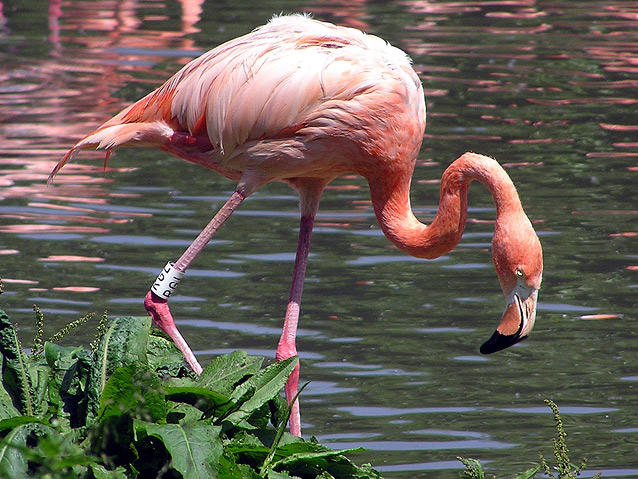
There is evidence that the colors of bird feathers are due to carotenoids, which birds do not make themselves. Like fish, these carotenoids seem to come from their diets (Hill, Geoffery. National Geographic, 2008). A study by Juan Amat in Spain is the first to show that birds transfer these carotenoid pigments with secretions from their uropygial gland for different reasons. The Uropygial, also called the preen gland, is found in many birds near the base of their tail. Some birds can modify their color by applying substances from internal or external factors. One of these substances that can modify color is the secretion of the uropygial gland which may cause orange, red, or yellow pigmentation. Amat and colleagues studied the seasonal variations in feather color in relation to courtship activity of the greater flamingo, Phoenicopterus roseus, in Spain. They were searching for the pigments that caused the color of their plumage in the uropygial secretions on the surface of their feathers. They also assessed whether the flamingos had certain behaviors they used to acquire and maintain their plumage color. They also looked at the timing of their coloration with their reproductive patters (i.e. egg laying). Their results showed that flamingo feathers were more colorful when they were with groups, and got lighter during the rest of the year. Fading occurred shortly after the breeding season. They also found evidence that the uropygial carotenoids were transferred to their feathers by rubbing their head on their necks, breasts, and back feathers. Because rubbing and color were prominent when the flamingos were in groups, and faded during the rest of the year, researchers believe color is directly related to mating. "Our findings in flamingos have important implications for the theories of sexual selection and signaling, highlighting the key role of the manipulation of plumage color by the birds themselves to improve signal efficacy." (Amat Et Al, 2010)
Beauty from the Bottom Up: Flamingos Add Natural 'Make-Up' to Their Feathers to Attract Mates, from Science Daily
Hill, Geoffrey. Bird Color Mysteries Explained, From National Geographic.
Image from: http://www.birding.in/birds/Phoenicopteriformes/Phoenicopteridae/greater_flamingo.htm
I wonder if all birds can express colors by what they eat. It would be amazing if a colorful bird such as a parrot could pull this off.
ReplyDeleteA neat way to test this would be to change their diet and see if they have a noticable change in color. I wonder, if their pigmentation turned to yellow (or some color other than pink), and then they started hanging out with a group of regular-pigmented flamingos, would their pigmentation change back to pink? Or would the rest of the group change to yellow to match? (Let's assume the majority of the flamingos start off yellow?)
ReplyDeletePat, I agree. That would be something cool to test. Maybe there are more factors involved than diet. I am not sure if all birds express color this way, but it is something I am looking into for my presentation.
ReplyDeleteI noticed at the zoo that there were several flamingos that had little to no pink present on their plumage. Is there any sexual dimorphism found in this group or do these few birds with little color just not sexually mature yet?
ReplyDeleteAnd are the dietary sources of the carotenoids common? Are the birds getting the same pigments in their zoo diets as they would in the wild? Salmon get their pink muscle from compounds in their diets, and have to be fed dyes when raised in hatcheries to produce the same coloration.
ReplyDelete